Verizon 4G LTE: Two Datacards and a WiFi Hotspot Massively Reviewed
by Brian Klug on April 27, 2011 12:11 AM EST- Posted in
- Smartphones
- Samsung
- Verizon
- LTE
- 4G
- Pantech UML290
- USB551L
- Mobile
- MDM9600
Samsung SCH-LC11 WiFi Hotspot
The next item on the list is the first LTE-enabled portable WiFi Hotspot, Samsung’s SCH-LC11. Samsung managed to beat Novatel to market with the first LTE enabled portable hotspot.
The SCH-LC11 comes in a small box matching the style of virtually all of Verizon’s LTE gear. Inside is the hotspot, a smartphone sized 5.55Wh battery, and 0.7A USB charger which appears to be the same as I’ve seen shipped with the Galaxy S phones. It’s a pretty big battery in the SCH-LC11, especially compared to the very ubiquitous MiFi 2200 which comes with a 4.25Wh battery.
The SCH-LC11 is almost the exact same outline shape and size as the MiFi 2200; it’s clear that Samsung had sights set on at least emulating some of this design.
Thickness wise, the Samsung hotspot is about 2mm thicker due to the larger battery that runs the length of the device. Along those lines the Samsung hotspot is a bit heavier as well, at 81.5g compared to the original MiFi’s 58.2g.
Removing the battery cover is easy thanks to a thumb slot at one side. Peeling that off reveals a sticker which has the device’s default SSID and password. It’s subtle, but putting the default SSID and password under the battery cover makes a huge amount of sense, and I’m glad Samsung did this. I purchased a Virgin Mobile MiFi 2200 when it first came out to take advantage of its originally unlimited data plan. We’ve used it at conferences a few times, and I originally had the intention of reviewing it before getting so backed up. Anyhow, one of the things that’s always bugged me about that device is that the default SSID and password are on a sticker right on the back of the device, which seems like an incredibly shortsighted and awful way of safeguarding the defaults that I wager a lot of users just stick with. Anyhow, it's a subtle difference. With the battery removed, you can see the slide in SIM slot and two test points for cellular RF chains.
On the top are the device’s status indicator LEDs; there’s one for 4G, 3G, WiFi status and activity, and of course power. What’s really nice about these is that they actually change color based on signal strength. Green means strong singal, yellow means weak, red means no signal.
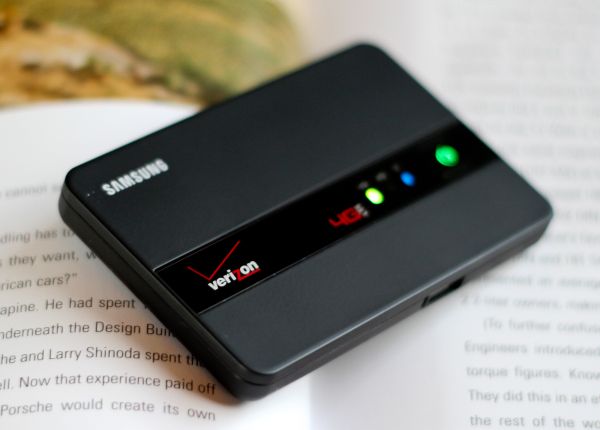
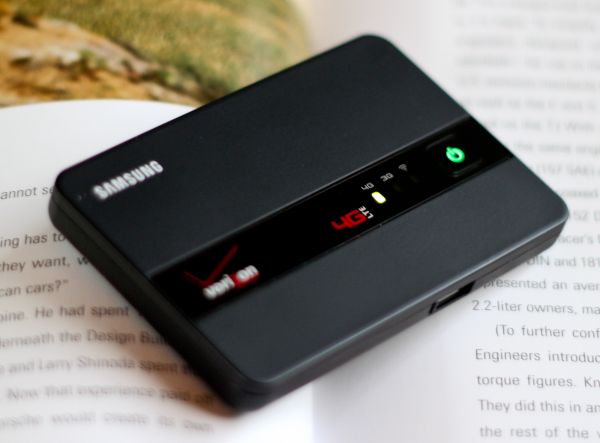
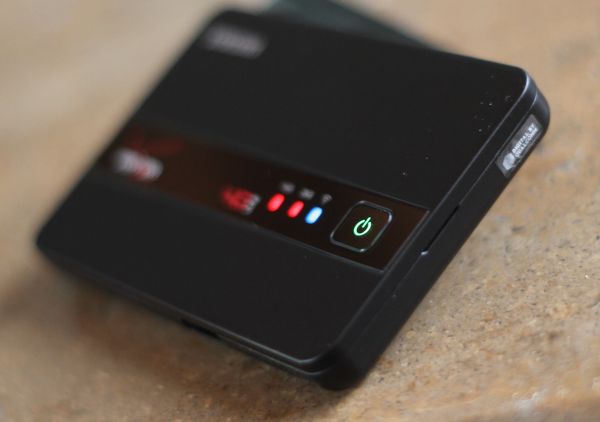
Clockwise from top left: Green, Yellow, Red. Yellow is hard to tell apart from green on the SCH-LC11.
WiFi glows green when no clients are connected, turns blue when clients are associated, and blinks on activity. Though newer MiFi designs use an e-ink display with signal bars, the Samsung hotspot’s use of LEDs that change colors gets the job done. This is a huge improvement from the original MiFi where checking status required a trip into the internal config pages.
The only major problem with these LEDs is the power LED, which is green between 20-100%, yellow between 6-20%, and red between 1-5%. As a result, it’s impossible to tell when the hotspot is fully charged, since it shows green over so much of the dynamic range. This definitely created problems for me multiple times, and sadly the only way to get a battery percentage is to head into the config pages and check.
The SCH-LC11’s design and build quality are both excellent. The majority of the device is a light soft touch material, with the exception of the glossy black strip where the status LEDs are. On the side is the device’s microUSB port which has a door similar to Galaxy S.
There’s not too much more to talk about regarding the Samsung hotspot’s physical appearances. It feels solid and isn’t too heavy, and maintains roughly the same outline as what people now expect portable WiFi hotspots to have. Like all of the LTE gear I’ve touched this far, the SCH-LC11 is also built around Qualcomm’s MDM9600 for EVDO and LTE.


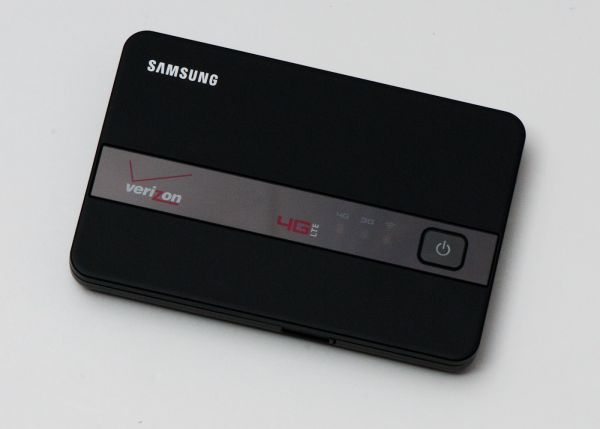
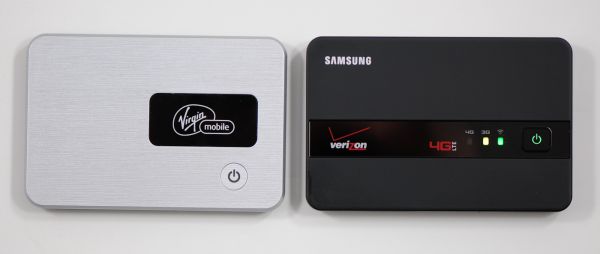
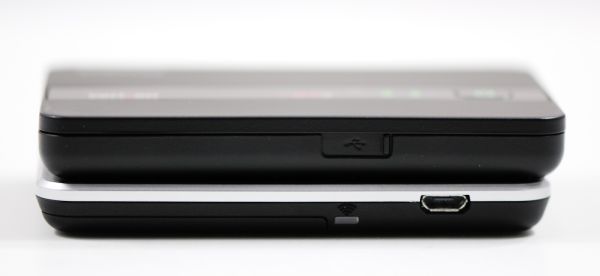

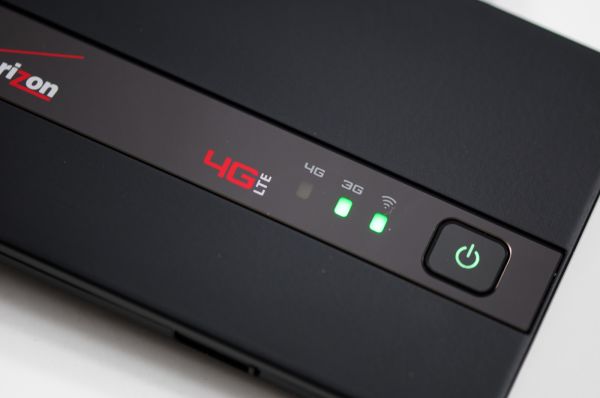
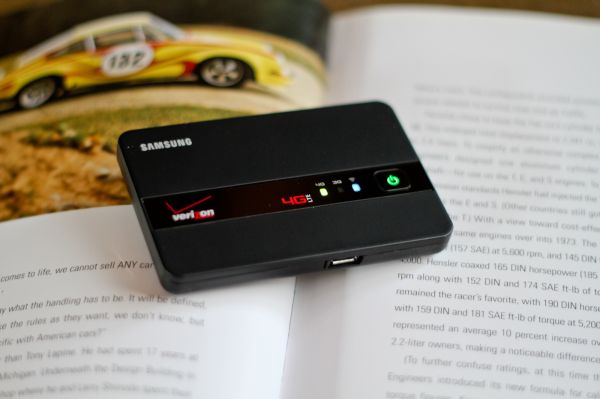














32 Comments
View All Comments
Brian Klug - Thursday, April 28, 2011 - link
I mentioned that with LTE sometimes the handovers pause the data context while the handover happens. It's an occasional 50-500ms pause, sometimes a second. Honestly I noticed it more on the data cards than I did the thunderbolt or the Samsung hotspot.That's another thing which will improve with time.
-Brian
iwod - Wednesday, April 27, 2011 - link
I dont think Bandwidth was much of a concern for mature 3G market. Even 1Mbps is good ( enough ) for web surfing. The problem is latency. And it is very high for 3G network,sometimes up to 1sec.LTE was suppose bring round trip performance down to double digit ms range. But my skip through of this article sees no test on Latency.
Another growing concern for me, is that Data and Mobile Network just dont seems to work. You have a finite amount of total bandwidth, but people consume data far greater then anyone would expect. I think someday we have to deploy national wide Micro WiFi + LTE station to help with bandwidth. Especially in populated city. ( I cant even imagine how would it even work out in place like Hong Kong and China )
Brian Klug - Thursday, April 28, 2011 - link
We tested latency on Page 10 if you're interested. Both latency as measured by speedtest.net (which isn't perfect) and by using pingplotter for almost 12 hours to a number of targets.It's sub 100 ms for a lot of things, and I showed gaming at 50ms to a local CS:S server. It's a definite improvement again thanks to much faster signaling and a shorter frame time.
-Brian
DanNeely - Thursday, April 28, 2011 - link
Unless I'm misunderstanding what the graph is showing, ATT's lower C block ownership is fragmentary with no coverage at all in large parts of the country.http://www.phonescoop.com/articles/article.php?a=1...
DanNeely - Thursday, April 28, 2011 - link
nevermind, I misunderstood what you were saying....bman212121 - Sunday, May 1, 2011 - link
I've seen another report from someone using LTE in New Orleans showing similar numbers. Anything sub 100ms should be fine for an fps. I've definitely seen worse under normal circumstances. FWIW using a D2 and comparing the ping times from the phones terminal to a pc using 3G hotspot, the wireless added 16ms latency.bman212121 - Sunday, May 1, 2011 - link
I have to wonder if they didn't include USB tethering simply because they couldn't sustain the power needed. If you were having issues with a 700ma charger than the maximum 500ma from a computer's usb port could be problematic. It is interesting though that the other devices worked, so I'm guessing that the wifi is what is really eating battery life.tjk818 - Wednesday, July 27, 2011 - link
I have the Pantech UML 290 and a cradlepoint router all updated with the latest firmware (4glte and 3g)works great on 3G now converting to 4g LTE using a ZADACOM feed cut for verizon746-806mhz and a grid antenna( Hyperlink ) . Without the grid I get 1 bar constant sometimes gong to 2 bars with the GRID I get nothing,Does the cable in the Pantech modem need to be connected or disconnected for it work on the grid , I live about 3 miles from the tower . also is there a setting that i can use in the VZAM menu ( under the DIAGVZW menu) that I can set the modem 4g port to activate the external antenna port and deactivate the internal antenna ? I’m using a specan I can see the carriers from the tower at 783mhz.
feed back is welcome
milan03 - Monday, August 22, 2011 - link
Hey Brian: you've mentioned that current Verizon LTE devices are category 3 meaning they can only achieve up to 50mbps with 2x10Mhz. Are you sure that's the breakdown because I'm seeing 50+mbps on a daily basis here in NYC and when downloading sustained well seeded torrent I'm seeing around 6MB/s which makes no sense. I am convinced that Thunderbolt is capable of 73mbps with all the overhead up to about 60mbps. Am I wrong? I dod have poor upload speeds which explains Thunderbolt being 2x1 MIMO not 2x2 like other devices, but is there any other LTE handset that's 2x2 MIMO?Here is what I'm seeing these days: [IMG]http://i51.tinypic.com/dhe1rd.png[/IMG]
oz973 - Tuesday, January 17, 2012 - link
How long does it take for this to charge to 100%? And how can you tell?